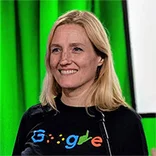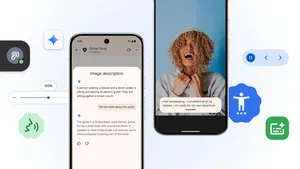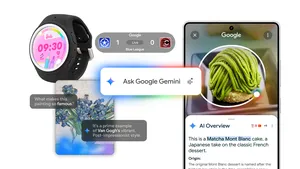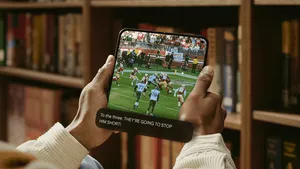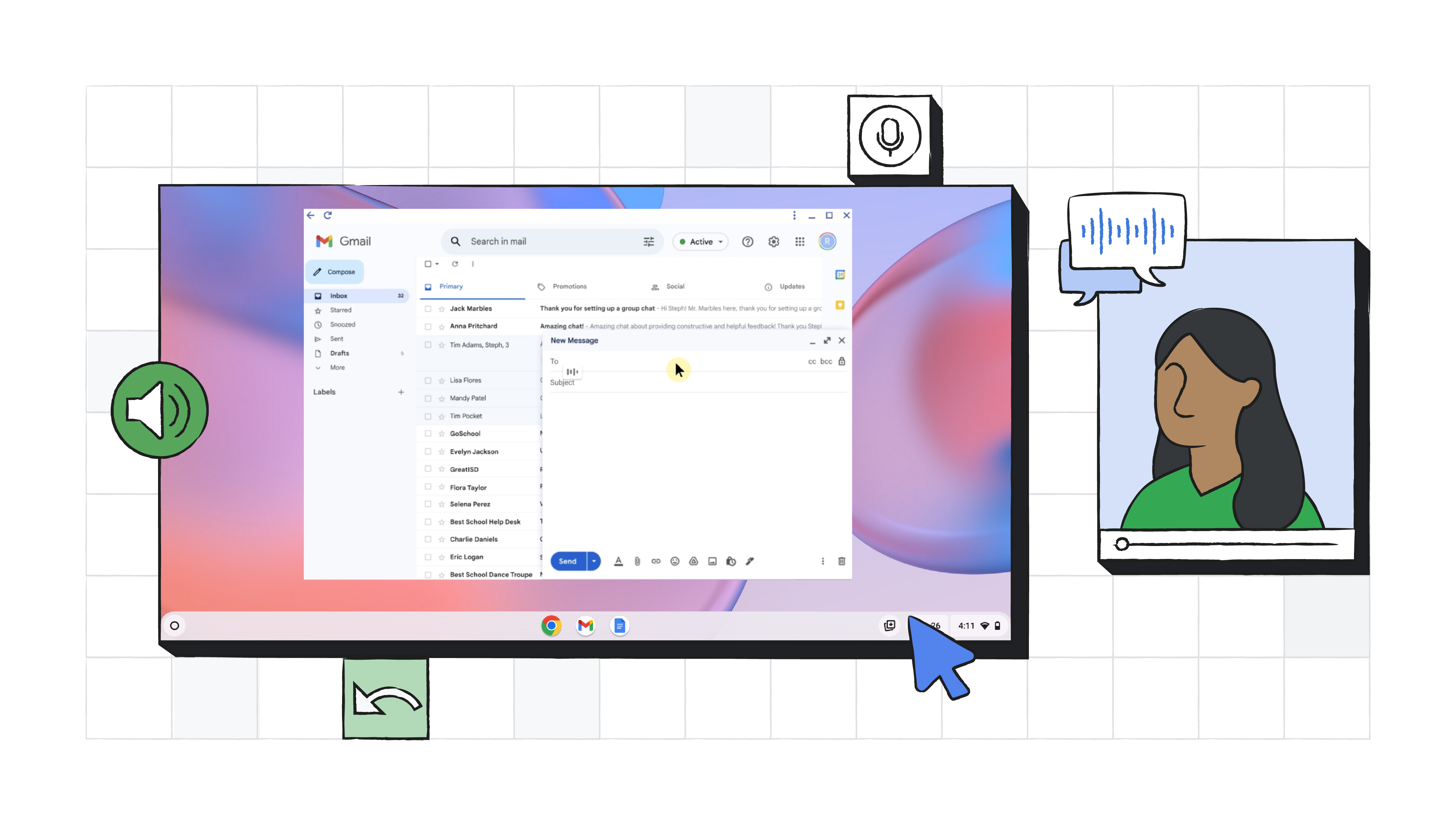Technology that is accessible to everyone: Three ways we’re building for people with disabilities

A few months ago, I received a note from a recipient of a scholarship that Google funds through the National Federation of the Blind. She had dropped out of college 20 years ago. “I quite literally failed out of college,” she wrote.
But now she was back in school—and succeeding—thanks to advances in technology over the past two decades that made it easier for her to participate in the classroom. Features like text-to-speech capabilities, screen readers that allow people to “read” the screen with synthesized speech or braille, and keyboard shortcuts that make it easy to quickly navigate complex sites and apps are all examples of technology that has made it possible for people with disabilities to have greater access to education and other opportunities.
This story was particularly moving to me because it summed up why I became an advocate for building more accessible technology in the first place. Every person in the world deserves a level playing field. And technology can play a huge role in making that happen.
As the head of the Central Accessibility Team at Google, it’s my job to make sure that we make our products accessible for the one billion people in the world living with a range of disabilities. And on Global Accessibility Awareness Day, I’d like to take the opportunity to share how we’re going about achieving that goal through greater understanding, increased training and evolving technology.
Truly understand people’s challenges
To build technology that is accessible to everyone, we have to understand what makes certain products inaccessible in the first place. That starts with connecting with people who use the products on a regular basis, so we can see firsthand what challenges exist and how we can begin to chip away at them.
So we’ve built connections with people with disabilities through advocacy groups, conferences and our own employees’ personal experiences. Through these connections we came to realize that there was a need for a dedicated disability support helpdesk where people could receive one-on-one support to better understand how to use our products, and share feedback on how they could be more accessible. That direct user feedback has shaped our products ever since—including the inception of the helpdesk itself, the introduction of wheelchair-accessible routes in transit navigation and improvements to our ChromeVox screen reader. By growing an understanding of the barriers that exist, we can build technology that removes them.
Think about accessibility from the very beginning
There are multiple teams and individuals across Google who influence and contribute to making our products accessible every day—whether it’s part of their job description or not. So providing learning opportunities and educational resources is a crucial first step.
The Central Accessibility Team facilitates training for new hires in software engineering, product management and user experience functions. And every employee has access to more than a dozen accessibility courses on an ongoing basis. Trainings cover everything from inclusive design to a technical overview of web accessibility techniques.
Accessibility can’t be an afterthought: It needs to be considered from the beginning of the product development cycle. And along the way you have to pause and ask, “Is this accessible to everyone?” We help both internal and external developers answer this question by providing tools to test their software for Android, iOS, and the web. We also help connect our internal teams to users with disabilities who are willing to participate in user research and trusted tester programs.
The result? Apps and products that are truly built to make people’s lives easier—like our new Accessibility Menu shortcuts in Android. We worked alongside people living with reduced dexterity as a result of conditions like muscular dystrophy or spinal cord injuries. With their input, we were able to understand what smartphone functions they used the most or caused them the greatest difficulty, and created an Accessibility Menu that could help make daily smartphone use a little bit more manageable.
Our responsibility to make accessible technology goes beyond our own walls. With help from our users we can make our apps and products even more accessible. For example, last September, Local Guides from around the world gathered at 200 global meet-ups to answer accessibility questions about more than 12 million places—like whether a restaurant had a step-free entrance or an accessible restroom. Just last week at I/O, we introduced new features for developers so they can create more accessible app experiences for users with disabilities, including new accessibility testing, best practices and guidelines for Android P. And today we’re launching updates to Primer, a resource for businesses, to help them build more accessible websites and products—because we know that a more inclusive web is better for people and better for business.
Lean into the latest technologies
The possibilities for accessible technology are greater than they were 20 years ago in part because of the advancement of technologies like AI.
Building products with AI allows us to constantly iterate and adapt our features and tools to the ever-changing world around us. As more content goes online every minute and as the physical world constantly changes, we need ways to bring that information to everyone faster, including those with disabilities. Tools like YouTube live captioning and Lookout—our new Android app that gives auditory cues about objects, text and people around them—are all possible thanks to AI. Similarly, AI-driven predictions make things like Morse code on Gboard a reality.
Our hope is that by building more accessible products, we can make a meaningful difference in the lives of people around the world who have a disability. Whether it's as simple as making it easier for someone to use their smartphone to make a phone call, or as big as helping someone go back to college, we're always looking for ways to level the playing field and give everyone the chance to participate more fully in their world.
